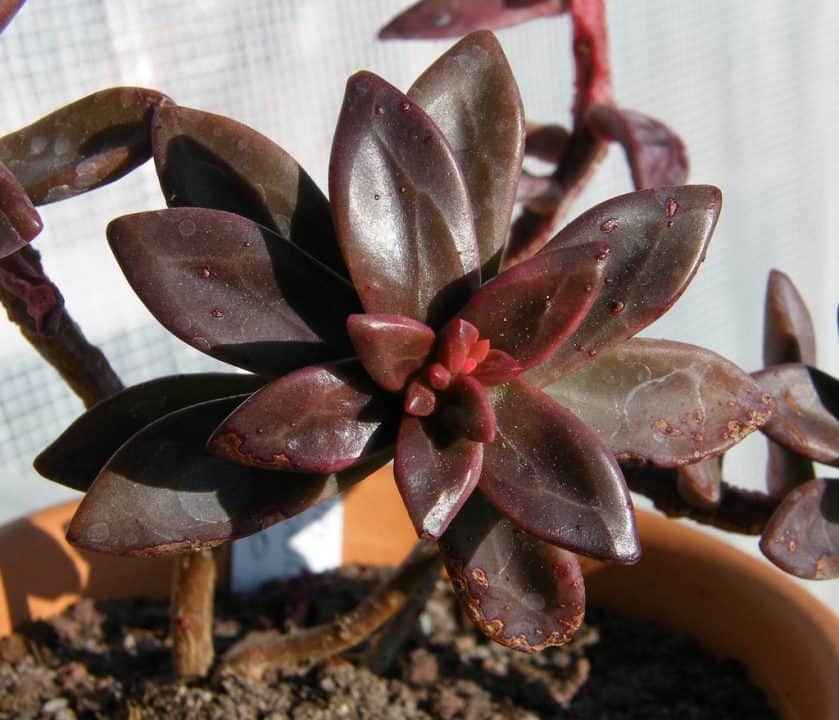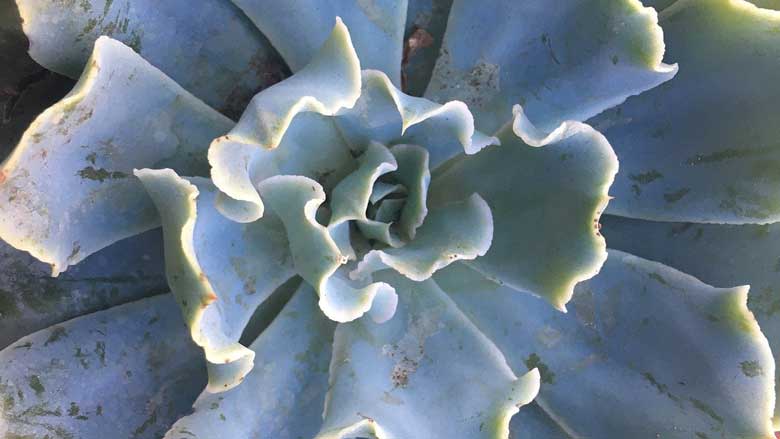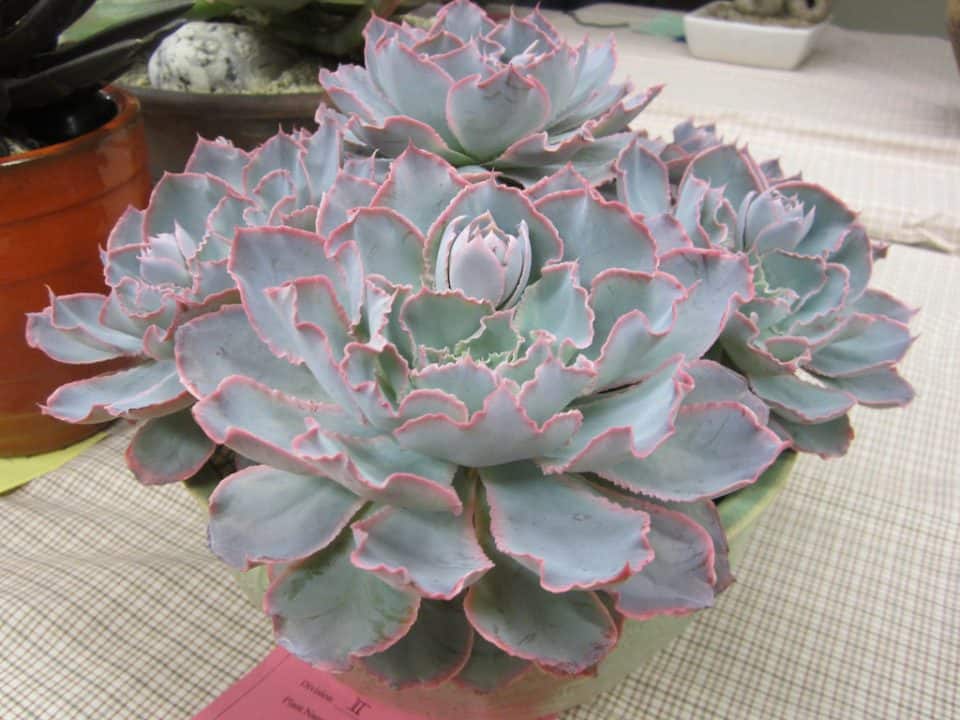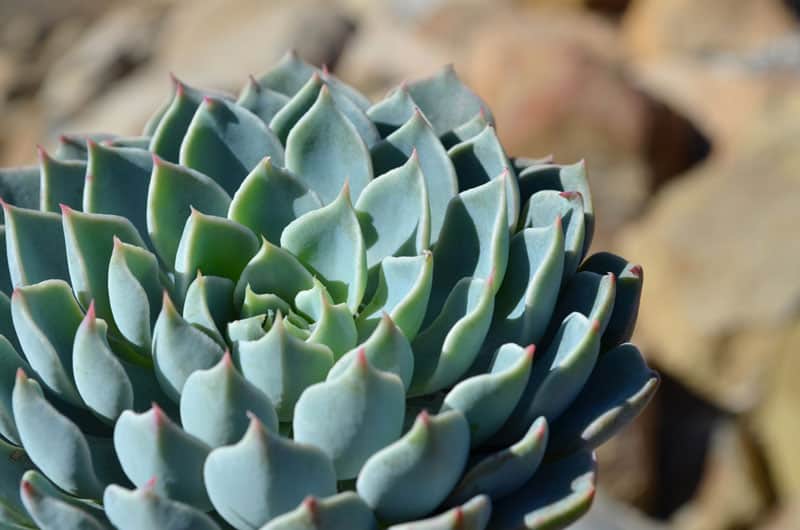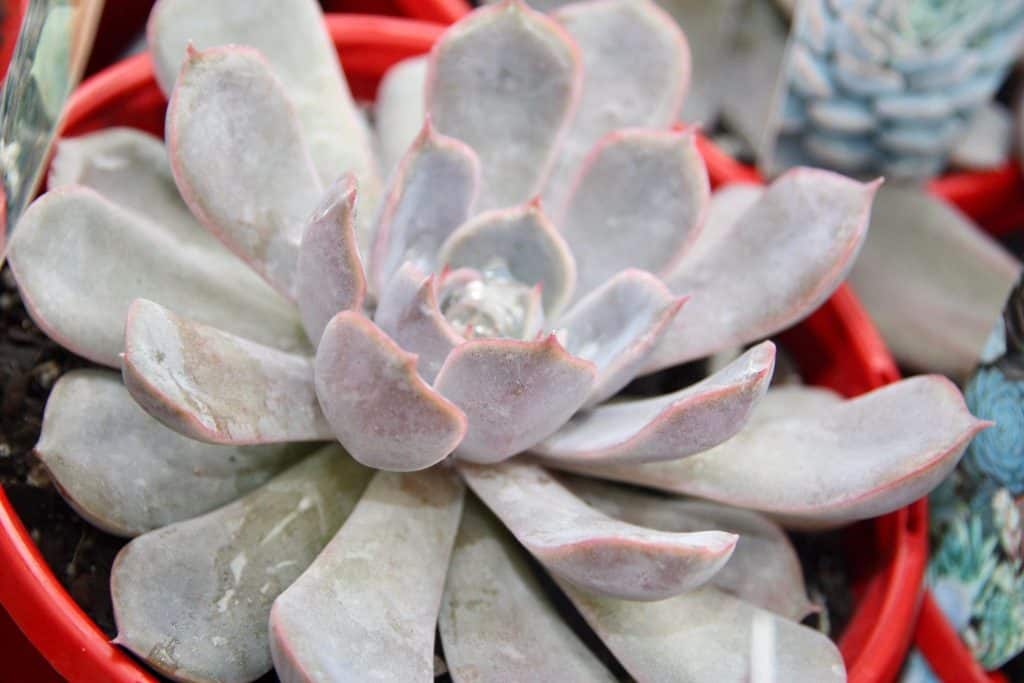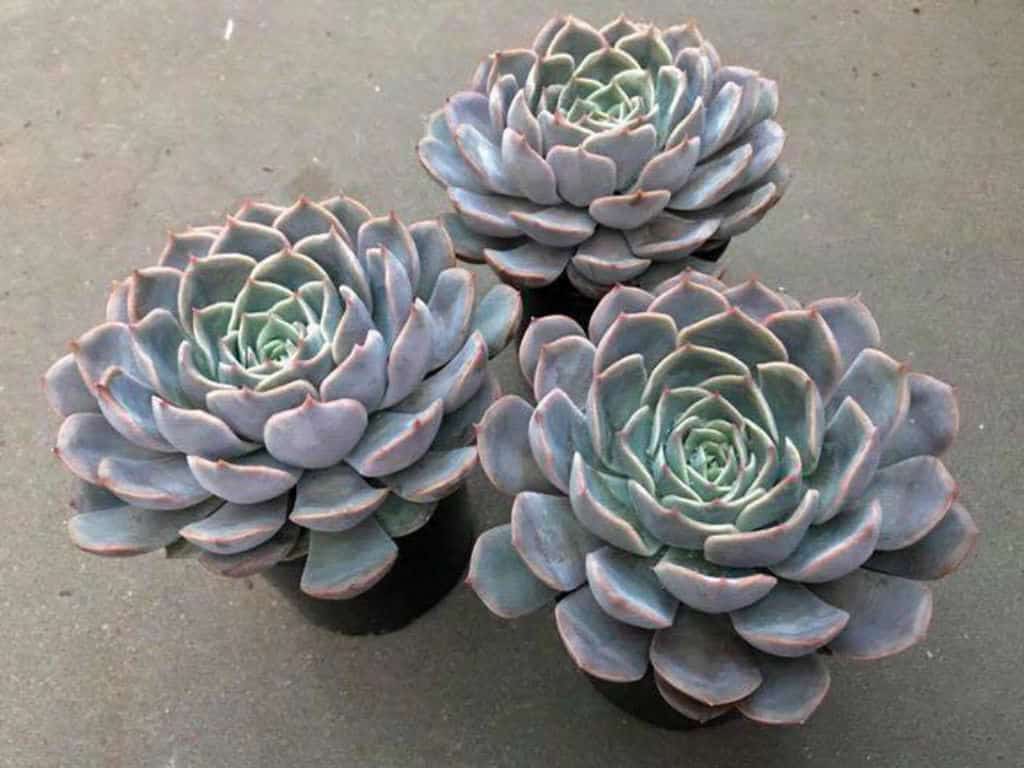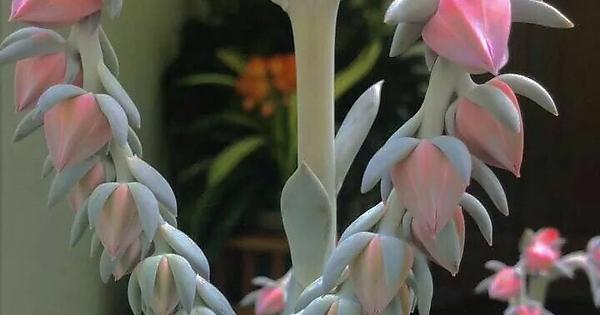Echeveria compressicaulis is an Echeveria succulent plant that can be found in Mexico and Guatemala. It has beautiful wavy leaves, and as an easy-to-grow succulent, it makes an excellent houseplant that anyone can grow inside or out, in the ground, or as a container plant, year-round!
It is a hardy succulent that prefers bright indirect light and evenly moist soil during its growing season and requires almost no care at all, making it an ideal plant for new succulent growers to try.
Echeveria compressicaulis is one of the most beautiful and carefree succulents you can grow indoors. While it can be grown outdoors in U.S. Department of Agriculture plant hardiness zones 10 and 11, its ease of growth makes it a perfect choice for beginning succulent enthusiasts looking to add some color to their homes or offices without requiring much effort on their part.
Origin and distribution
Echeveria compressicaulis is a species of succulent plant in the family Crassulaceae. It is native to Mexico and can be found in the states of Hidalgo, Mexico City, Puebla, and Veracruz. The plant is also found in Guatemala. It prefers habitats with full sun exposure and well-drained soil that has a neutral pH level.
A temperature range of 15 to 22°C (59 to 72°F) is best for this variety. They prefer a lot of water during their growing season, but care should be taken not to overwater them. If grown outdoors, then they require protection from wind which could potentially damage their thin leaves.
In areas where temperatures are lower than 15°C (59°F), it’s recommended to grow the plants indoors as ornamental houseplants. However, if being grown indoors, avoid hot drafts or temperatures below 10°C (50°F).
In humid environments such as kitchens or bathrooms, place the plants away from direct sunlight and provide higher humidity levels by using tray systems or humidifiers.
Echeveria compressicaulis propagation
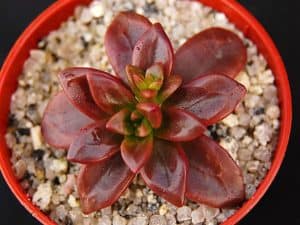
Echeveria compressicaulis can be propagated by offsets, leaves, or stem cuttings. To propagate by offsets, gently remove the offset from the mother plant and pot it up in a well-draining cactus mix. Water sparingly until new growth appears.
For leaf propagation, place a leaf in a well-draining cactus mix and water sparingly until new growth appears.
Stem cuttings are taken when an offshoot is 6 to 8 inches long. Remove all but one set of leaves from the cutting and strip off any lower leaves that may have become wilted. Place the cutting in a well-draining cactus mix with the bottom just above soil level; keep moist but not soggy wet while rooting occurs which usually takes 4 to 6 weeks.
Once rooted, move your new echeveria into its own container. Plants grown in small pots require less watering than those grown in large pots because they will dry out more quickly.
If you use too much fertilizer, plants can also rot at the base and lose their roots. A good rule of thumb is to use 1/4 strength every time you water until it becomes clear how much fertilizer the plant needs to maintain healthy growth rates.
Echeveria compressicaulis care information
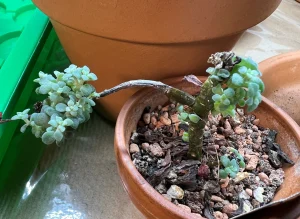
These succulents are native to Mexico and can tolerate a wide range of conditions, making them ideal for beginner growers. They prefer bright, indirect sunlight but can also tolerate partial shade. Allow the soil to dry out completely between watering, and be careful not to overwater as this can lead to root rot. These plants are relatively drought-tolerant and only need to be watered every few weeks.
Light requirement
These plants prefer bright, indirect sunlight but can tolerate some direct sun, especially if they are slowly acclimated to it. If the leaves start to look yellow or pale, that’s a sign they are getting too much sun and you should move them to a shadier spot. Echeveria compressicaulis can tolerate low light but will grow slower and produce fewer flowers in these conditions.
Soil/potting mix
Echeveria compressicaulis needs a well-draining soil or potting mix. I like to use a cactus mix or add some perlite to my regular potting soil. These plants are native to dry, rocky areas of Mexico so they do not need a lot of water.
Allow the soil to dry out completely between waterings. These plants are also quite tolerant of neglect, so if you forget to water them for a while, they will probably be just fine.
Watering
Water your echeveria compressicaulis when the soil is dry to the touch. These plants are drought tolerant, so they don’t need a lot of water. Water deeply, but be careful not to overwater, as this can lead to root rot. Allow the soil to dry out completely between watering.
Do not let it sit in standing water or stay wet for long periods of time. Keep an eye on the plant for signs of wilting or drooping leaves that may indicate that it needs more water. If you are unsure about how much or how often to water your plant, consult a local garden center specialist or horticulturist before taking any action on watering schedules.
Fertilizer
Echeveria compressicaulis is a slow grower and doesn’t need much fertilizer. A light feeding every other month with a balanced succulent fertilizer will be plenty. During the active growth period, from spring to summer, you can increase the frequency to once a month. As with all succulents, it’s best to err on the side of too little rather than too much fertilizer.
Temperature
Echeveria compressicaulis is a tropical plant, so it prefers warm temperatures. It will do best in temperatures between 65 and 80 degrees Fahrenheit. If the temperature gets too cold, the leaves of the plant will start to turn brown and drop off. If the temperature gets too hot, the leaves will start to wilt and the plant will stop growing.
Humidity
Echeveria compressicaulis are native to Mexico and prefer a warm, humid environment. They are drought-tolerant but will thrive with regular watering, especially during the hot summer months. Misting the leaves with water can also help increase humidity. If you live in a dry climate, you may want to consider growing your echeveria compressicaulis in a terrarium or greenhouse.
The ideal humidity range is 60-70% relative humidity (RH). A hygrometer will measure the RH of the air around it. When purchasing one, be sure to get one that measures relative humidity as well as temperature because these two factors must be considered together for accurate readings.
Pruning
Echeveria compressicaulis can be pruned to maintain its shape or to encourage new growth. To prune, use sharp, clean scissors or a knife to remove any dead leaves or stems. You can also remove any offsets (baby plants) that are growing around the base of the main plant.
Pruning will help keep your plant healthy and looking its best. It is generally not necessary to repot an echeveria compressicaulis as they like their roots in tight quarters. However, if you notice leaf loss near the soil line it is possible that they need more air circulation near their roots. Repotting can help with this problem.
When to repot
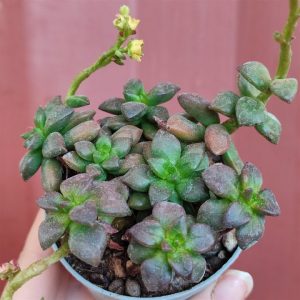
Echeveria compressicaulis should be repotted every two to three years. They prefer a well-draining potting mix and a pot that is only slightly larger than the current one. Be sure to water thoroughly after repotting and do not fertilize for six weeks.
In order to keep your plant in good shape, it’s important to rotate its position once or twice a week and watch out for pests such as spider mites. The last thing you want is a sick echeveria!
Dormancy/Winter rest
Echeveria compressicaulis, like most succulents, enjoy a winter dormancy period. This means that they will go through a growth slowdown and may even stop growing altogether.
During this time, it is important to reduce watering frequency and allow the soil to dry out completely between waterings. If you live in an area with very cold winters, you may want to consider moving your plant indoors or providing some extra protection, such as covering it with a frost cloth.
Echeveria compressicaulis flower & fragrance
The echeveria compressicaulis produces small, yellow flowers that have a light fragrance. This plant is drought-tolerant and does not require much water to thrive. It can be grown in a pot or in the ground and prefers full sun to partial shade. To propagate, simply remove a leaf from the plant and place it in well-draining soil.
Growth rate
Echeveria compressicaulis is a relatively slow-growing succulent, so don’t expect it to fill out your garden overnight. It typically takes about two years for this plant to reach its full size. The good news is that it’s very easy to care for, so you won’t have to put in a lot of effort to keep it healthy and happy.
Toxicity
Echeveria compressicaulis is not considered toxic to humans or animals. However, as with all plants, it is always best to err on the side of caution and keep this plant out of reach of small children and pets. If ingested, the plant may cause stomach upset.
USDA hardiness zones
Echeveria compressicaulis grows best in USDA hardiness zones 8-11. It is recommended to grow this plant indoors, or in a pot on the porch during the winter months. The soil should be well drained and have a neutral pH level. Keep the soil moist but not wet, as this will encourage rot to set in.
Be sure to give it plenty of sun; the brighter the light it gets, the better it will grow.
Pests and diseases
Echeveria compressicaulis are generally resistant to pests and diseases, but they can be susceptible to mealybugs and root rot. To prevent pests and diseases, water your plant regularly and keep the leaves dry.
If you notice any pests or diseases, treat them immediately with an appropriate pesticide or fungicide. It is best to avoid high-nitrogen fertilizers as these may encourage insect infestations.
